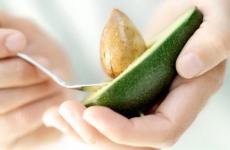How to sprinkle paths from ice in the country? How to deal with ice on the paths and why you can not use ordinary salt in the garden? How to get rid of frost on the porch
Appearance on the paths and steps of the ice occurs most often in the thaw when the street temperature “passes through zero”, and the water (snow) first thaws and then freezes. Therefore, so that the paths do not turn into a skating rink, they should be regularly cleaned of snow and ice (for example, fallen from the roof).
To do this, stock up on traditional winter snow removal equipment - snow shovels, hand scrapers. Labor can be made easier by means of mechanization. For cleaning freshly fallen snow from the paths, it is better to choose compact snow blowers of low power (up to 3 hp or 3 kW), they do not require high performance. Chemical methods of dealing with icing.
Anti-icing materials of different brands are powdered mixtures of sodium and calcium chlorides. There are several brands of mixtures, which differ mainly in the minimum outdoor temperature for their application. There are, for example, mixtures suitable only for small frosts (up to -10 ... -15 ° С), and there are also for severe colds (up to -25 .. -30 ° С), this parameter must be indicated on the package.
Sand, gruss, fine-grained gravel. Environmentally relatively safe products are also popular, which, like chemical reagents, are scattered when ice is likely to form. It is better to use not sand, but larger (2-3 mm) stone chips.
Electric heating of steps and walkways especially convenient in areas with a total area of up to 5-10 m 2. The maximum area is limited by the amount of electricity that can be spent on heating, the specific power of anti-icing systems is 250-300 W per 1 m 2.
For this, as a rule, heating cables (or mats based on a heating cable) are used with additional protection against mechanical damage and overheating. Similar special kits for preventing steps and sidewalks from icing are available from Caleo, CCT and a number of other manufacturers.
The anti-icing system is controlled by a thermostat. For anti-icing systems, special temperature controllers are used, the main task of which is to remove snow and ice. Simple models worth 3-5 thousand rubles. they measure only the ambient air temperature and turn on the system in the range of +5 ... -15 ° С, regardless of the presence of precipitation.
And more complex and multifunctional weather stations with the ability to connect a precipitation sensor cost from 10-12 thousand rubles. (CST and Caleo) up to 30-40 thousand rubles. (Raychem. Devi). Precisely because these weather stations turn on heating only in the presence of precipitation, they are more economical than simple ones (just for 3-5 thousand rubles). For greater efficiency, the system can be supplemented with a timer that allows you to schedule switching on, for example, only on those days when you are at home.
All this helps to reduce system operation time by about 50%. Is it a lot or a little? In the Moscow region, about six cases of ice formation are recorded during the winter and about three times more cases of black ice. A well-adjusted system will work 500-600 hours per season, an unadjusted system will work twice as much. If, say, the system consumes 2 kWh, then the total electricity consumption per season will be 1000-1200 kWh or 2000-2400 kWh, respectively.
Installation of the anti-icing system is carried out in the warm season in a concrete screed. It is important to ensure maximum electrical safety of the device and hermetically insulate all cable connections.
For this, special hermetic couplings are used. In everyday life, for site heating systems, it is recommended to take ready-made sections, with couplings installed at the factory. To achieve greater safety, the anti-icing system should be supplemented with an RCD with a tripping current of not more than 30 mA.
OPINION OF THE SPECIALIST
For effective operation of the anti-icing system, the heating power per 1 m 2 should be at least 250 W / m 2, and for steps it is desirable to set the power to 300-350 W / m 2. As for control systems, there may be several solutions. In simpler cases, analog controllers are used (for example, Caleo UTH-180SM), which turn on heating in a certain temperature range (usually +5 ... -15 °). More complex ones use digital weather stations like the Caleo UTH-X123 with rainfall and heated surface temperature monitoring, making the system more economical and efficient. The average duration of such a system in a year is approximately 1-1.5 months.
DENIS GOLUBIN
Approximate diagram of the layout of the electric heating system of steps
(a). Installing a thermostat inside the house, near the entrance (6). The heating cable is poured with concrete mixture, the layer thickness is 2-5 cm (c). Finishing material (for example, tiles) is laid on top (d). xLayder Street (Caleo) heating thermomat kit, used for heating street steps and paths (d)
Icing (icing when raindrops solidify) is often confused with black ice (water freezing when the outside temperature fluctuates)
 18W LED wall lamp Waterproof IP66 porch light modern…
18W LED wall lamp Waterproof IP66 porch light modern…
1485.7 rub.
Free shipping★★ ★★ ★★ ★★ ★★ (4.80) | Orders (59)
 12W LED Wall Lamp Outdoor Waterproof IP65 Porch ...
12W LED Wall Lamp Outdoor Waterproof IP65 Porch ...
In winter, seeing tons of snow is not unusual. In urban conditions, in order not to slip on the ice, they are sprinkled with anti-icing reagents. But what about the private sector: a porch, an entrance to the garage, paving slabs, paving stones and garden paths that you have to walk on daily? How can you melt the ice or minimize the effect of "flight"?
How to get rid of ice
There are various means by which garden paths and paving slabs are sprinkled: salt, sand, bischofite, marble and granite chips, earth and ash.
- The most common reagent is salt. Available, cheap, but harmful! The strongest substance, chloride, really effectively corrodes snow and ice. At the same time, shoes, clothes suffer from it, pipes are corroded, any coating of the track is destroyed, and sticking to the paws of animals causes allergies.
As a precautionary measure, the dosage must be observed. With a slight frost, 20 g of salt is distributed per 1 sq.m. It is unlikely that any of us will be able to distribute a tablespoon of the substance over this area! To have an effect, the layer should be 3-5 mm.
Table salt is best used in mild frosts, down to -7 ° C.
So that after a powerful ice fight the next day ice does not form again, as a preventive measure, garden paths are sprinkled with reagent in small portions. It is better to use extra salt. Small grains will not allow frost to turn into a skating rink.

If an ice crust has already appeared, salt should be used in larger granules.
- The next, well-known bulk substance, but a little more expensive than the previous version, is sand. It is well scattered on the porch and paths, the ice underfoot becomes less slippery and everything seems to be fine. Do not forget that the sand is light and in a strong wind it will quickly scatter. Too thick a layer solves this problem, of course, but then another one arises - all the dirt will be brought into the house with shoes.
- An effective and quick way to clear garden paths of ice is to mix warm water with dish detergent and alcohol in a ratio of 2 liters of water, 6-10 drops of detergent, 60-100g of alcohol. Pour into a bottle and water the area. This mixture melts ice very quickly. This will prevent ice and dirt.
- Breaking ice with a shovel, crowbar or rake is a bad idea, as this can damage tiles, paving stones and even ordinary concrete pouring. Although, as they say, “There is no reception against scrap,” and not a single composition will work better and cleaner.
- Magnesium chloride (bischofite) is best used for sprinkling ice on ceramic tiles or wood. Not suitable for concrete areas and near foundations. It destroys the cement.
- Marble chips sprinkled on the ice paths look very beautiful. She will not let you slip, but white marks remain from her. At the end of winter, it does not need to be removed, it is enough to sweep it to the ground. Over time, the marble will dissolve.
Granite crumb leaves no traces in the house, but it needs to be collected (sweep) from the paths.
- Sprinkling garden paths from ice with earth and ash is also effective. They will not melt the ice, the snowy mood will be “stained”, dirt on the shoes, but they will not let you slip and fall.

How to remove ice from paving slabs
Often the foreground of the house is paved with paving slabs. Neat shapes in multiple colors are a great alternative to simple concrete pouring. In winter, the tile absorbs water, due to the porous base, and freezes in frost. Ice water leads to rupture of internal pores and cracks appear over time.
It will not work to remove ice from paving slabs with a crowbar, because. it is quite difficult to calculate the force of impact, and it is easy to break a tile. Metal scrapers and brushes can scratch it, and hard abrasive materials make it unstable to external natural phenomena.

To reduce the icing of paving slabs, a water repellent is used. The water-repellent composition gets into the pores, frost resistance increases, repelling the ice crust from the surface. From salt and saline solutions, the top layer of concrete gradually changes inside, while reducing the service life.
As improvised tools, use only wooden or plastic brushes, brooms, scrapers, shovels, crowbars. It will be appropriate to apply anti-icing reagents. But rather than removing ice, it is better to prevent its formation. after every snowfall. From caking and trampling, a dense layer is formed, which is difficult to clean in the future.
scares you winter ice? Are you afraid of falling and hurting yourself? There are even such situations: during the day the weather still pleases us with its temperature, even the sun warms a little. But the temperature at night often drops to a certain number of degrees below zero. As a result, ice forms on the roads in the morning. And it's really hard to avoid it. There are many ways to help walk on ice without fear. If you leave it unattended, then there is a huge chance that you will slip. And the ice itself will significantly complicate the movement on the roads. It is for this reason that it is simply necessary.
What to sprinkle on ice in winter
In winter, this is really one of the most basic problems for those who live in a private house. But those who live in apartments often walk on ice that is not processed in any way. However, this is already a problem that directly concerns the utilities, which are responsible for solving it. Quite another matter is the private sector, along the paths of which you walk every day. And not taking care of their own safety is very stupid.
Basic ways to make ice less slippery
1. Simple boiling water. Just imagine this ice. What is the easiest way to deal with it? Of course, this is just boiling water! After a while, the ice will completely melt, and if the paths are at an angle, then all the water will drain from them, and after the onset of the next frost, ice will not form for some time. But the decision to melt it will help get rid of the ice only until the thaw. This option may be considered.

2. Salt. Many people prefer this way. Salt eats ice just instantly, and after a couple of minutes it will be possible to safely move along the paths. The disadvantage of this option is that salt corrodes the path itself. And it doesn't matter what material it's made of. Concrete, tile or paving stones - everything falls under this effect. In addition, you will drag salt on shoes to your home. The soles of your shoes will also suffer from this action. Therefore, this method is not recommended.
3. Sand. The method is on the same level as salt. But here everything is much simpler. The sand will evenly fall on the ice, and the owners will not fall off the steps, porch or other surface where ice has already formed. The disadvantage is that the sand is blown away very quickly. And if a small amount of it remains on the ice, then it no longer saves from a slippery surface. And one more minus - if you pour a lot of sand, then part of it will definitely move home because of the shoes.
4. Unique tool. This method will help you instantly remove the ice without any damage to the surface. Required: two liters of warm water, liquid dishwashing detergent (6-7 drops), 100 grams of alcohol. All these components must be mixed, and feel free to use it. For convenience, the product can be poured into a plastic bottle, then pour ice from it. Years of experience says that if you use this tool, the ice will quickly melt, and salt and sand will not be needed.
Winter is a magical time of the year. There are snowdrifts all around, and in the evenings a snowstorm and a blizzard. In addition, very soon the New Year and Christmas are holidays that cannot be missed. But at the same time, the risk of injury and road accidents increases in winter. And all because of the glaciation of the roads. Both highways and tiles in a private house sin with this.
And if ice is being cleared in the city, then residents of private houses or summer cottages need to rely on their own strength. Today we will touch on a hot topic - from ice and how to get rid of it altogether.
With snow, everything is clear, a shovel or a snow blower is enough. We have already written about the snowplow in this article, so check it out. Let's talk about ice.
Salt
To date, the most effective and common method of dealing with ice is ordinary salt. It perfectly "melts" the ice, and its cost is low. Alas, this method has its drawbacks. Firstly, if it is very cold outside and the temperature reaches -15, then sodium chloride cannot cope with its task. But if you treat the surface with saline before the onset of frost, then the efficiency will increase and it will be easier to deal with ice.
Secondly, salt as a deliverer is not suitable for concrete or tiles, because it contributes to the destruction of the path or porch. In addition, salt has a negative effect on the shoes and paw pads of pets. And in terms of ecology, this is not the best option.
Sand and stone chips
Sand is a good option and can be sprinkled on walkways. But its cost is high and it is unlikely to succeed in buying one bucket. As a rule, sand is ordered by machine. If you manage to get 1-2 buckets, then you can safely sprinkle the path, but remember that this is not for long. A strong wind will easily blow away small particles, and if it rains and frost hits again, the sand will freeze and there will be little sense. But as an alternative to salt, it has a place to be.

Stone crumb has the same advantages as sand, but she adopted its disadvantages as well. Will keep until the first strong wind or rain.
Swiss method BAA
In 2004, a scientist from Switzerland came up with an interesting method of dealing with ice. In order to process the highway, it is necessary to take fine sand and mix it with very hot water (95 degrees). Proportions 7:3. Then, using special equipment, you need to spray the sand.

The principle of operation of the method is as follows: a hot mixture is fused into snow and ice, making it rough. As a result, the roads are not slippery. The disadvantage of this method is the price of technology, but if you know an analogue and can spray the solution with something, then try it.
Chlorides and urea
In Canada, the United States and New Zealand, chlorides are often used as an alternative to regular salt. One of these ice breakers is magnesium chloride. It is indeed very effective, but the cost is high, and there will be even more destruction. Calcium chloride is environmentally friendly, but ineffective, especially at very low temperatures. This also applies to urea, which, by the way, is seven times more expensive than salt. But to sprinkle a small porch in the house may be suitable. But for the carriageways in the city is not effective.
How to sprinkle paths from ice in the country and should it be done?
If you ask this question to an ecologist, the answer will be unequivocal - nothing. But it's not always safe. Therefore, you need to look at the circumstances. The most accessible method, but requiring physical strength, is the “cutting down” of ice with a crowbar. It is both effective and environmentally friendly. True, if there is a lot of ice, then it will be difficult to cope.
One of the popular folk methods is to pour hot water over the ice. Of course there will be an effect, but the weather will take its toll and the water will freeze again. So the method is highly questionable. But the second one is much better. You will need water - 2 liters, and 150-250 ml of vodka or alcohol. As well as the usual detergent (from 100 ml and more). Mix everything and fill the area with ice. Wait and start cutting the ice. Works better than salt.

As for non-freezing liquids, everything is debatable. Of course, they work, but they do not completely penetrate the ice and in order to get rid of a thick layer, it will take about 10 liters. So whether it's worth it is up to you.
If you live in a private house and you have a stove or boiler that you heat with coal, firewood, then another option is ash. How to sprinkle the tracks, if not with it? Of course, the ice from the ashes will not go anywhere and after that you will have to remove it, but you can safely walk.

So, let's sum up. If you do not know how to remove ice from paving slabs or how to sprinkle it, then there are not many options - sand, and no salt if you do not want it to corrode it. For cottages and houses where the yard is not paved with anything, anything is suitable. If you do not think about the state of the environment, then perhaps salt will be the best option. Both clean from the pack, and saline. Only salt will need a lot, at least 2-3 packs.
For more information on how to remove the ice, see this video.
Falls due to ice are very common in winter. In most cases, you get up and continue on your way, but there are a huge number of cases when a person slipped on ice and broke his arm, leg, or even his spine. Such adventures will not do any good, so the ice must be removed at least near your home.
If the snow can be removed easily enough with a snow blower, then removing the ice will be a little more difficult. You will need the desire to clean it and a few hours of free time. This will not only add to your comfort when walking. Clearing ice will allow you to pump up your muscles and recharge your batteries for the whole next day.
For cleaning, we need an ordinary snow shovel, a small crowbar about 150 cm long and a simple tool that consists of an ax butt and a 160 cm long pipe, to the end of which you need to weld the butt.
First of all, you need to clear the weight of the snow so that the surface of the ice is not hidden on them. Snow should immediately be thrown out from the entire territory that you plan to clear from ice. After removing the snow, we pick up an ordinary crowbar and cut a small piece of ice to the asphalt, or any other surface. Thus, you need to clean a piece about 45x45 centimeters in size. This is done so that you yourself do not fall and injure yourself, but simply stand on a hard, and most importantly, non-slippery surface.
After the site is ready, put the crowbar aside and pick up a tool consisting of an ax and a pipe. Let's call it an icebreaker. We begin with its help to break off pieces of ice with single blows. You need to hit at such a distance that the ice breaks freely, and you do not have to hit again. After a dozen other broken parts, you need to use a shovel to throw the ice away from the already clean area and throw it away.
Thus, a fairly large area of the yard can be cleared in a few hours. If this method does not suit you, or the ice is not yet so thick to break it off, ordinary salt will come to your aid, which will gladly corrode both snow and ice. True, there is one minus, salt also corrodes the metal of your car and spoils your shoes. A bag of ordinary table salt, the lowest quality, respectively the cheapest, mix it with sand bags and sprinkle all the slippery areas in the yard with a regular shovel. The minimum layer of such a sprinkle should be 3-5 millimeters. The salt will slowly eat away at the ice, and the sand will keep you from sliding while the salt is working. Here is such a mutual assistance between salt and sand. By the way, the reagent that is supposedly sprinkled on our roads is most often sand and salt.
That's actually all the simplest and most effective ways to deal with ice in the yard. You don’t need to invent anything, you just need to work for an hour, according to a well-known scheme.
Don't forget about the children's skating rinks, which were first filled and then rolled out by children from all over the yard. Having destroyed such a skating rink, children will consider you their enemy for more than one day, and possibly more than one year.






